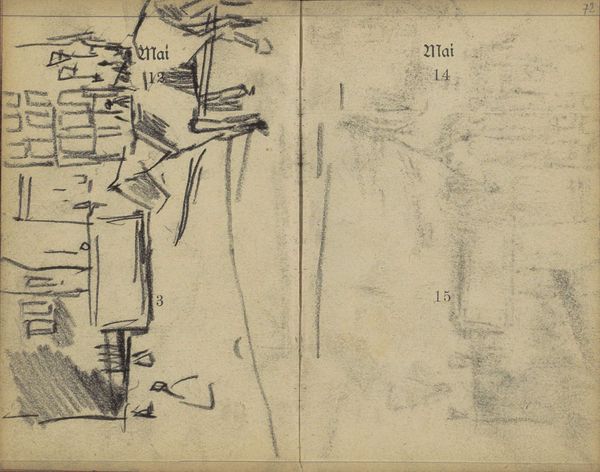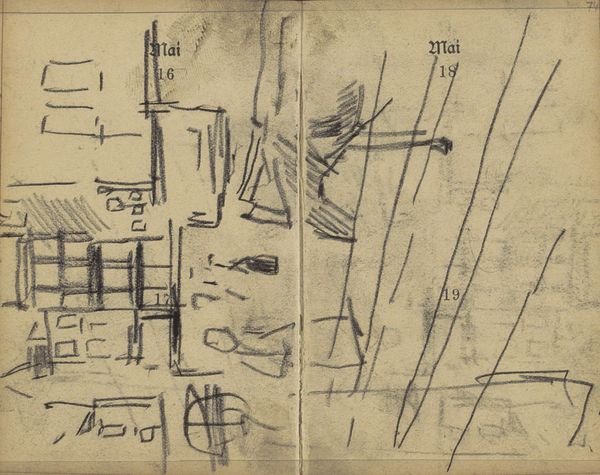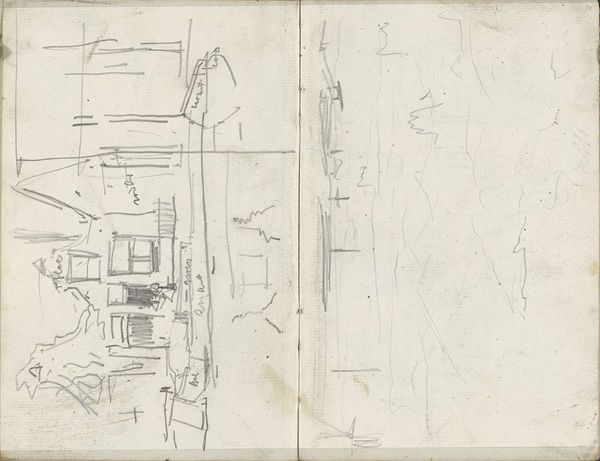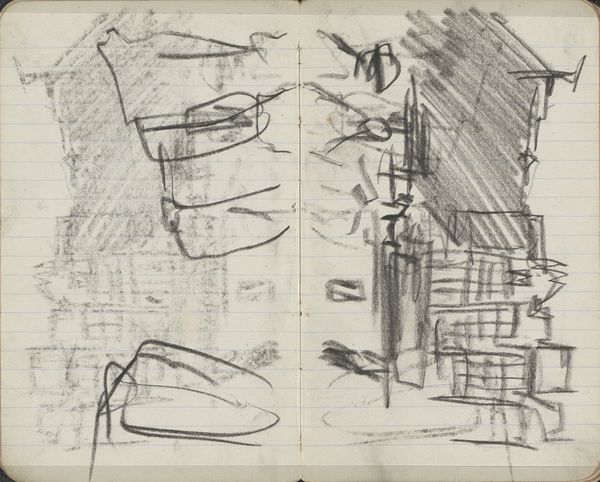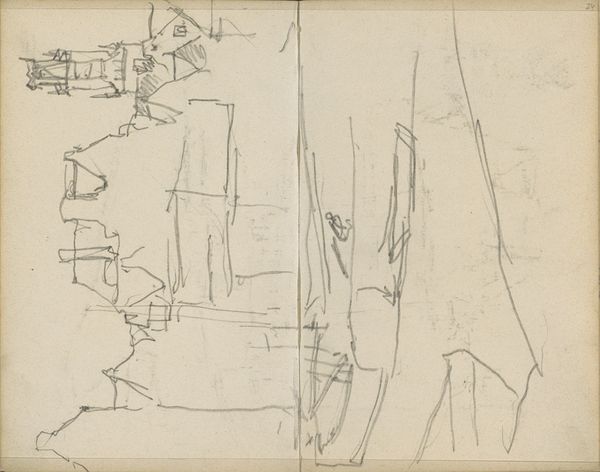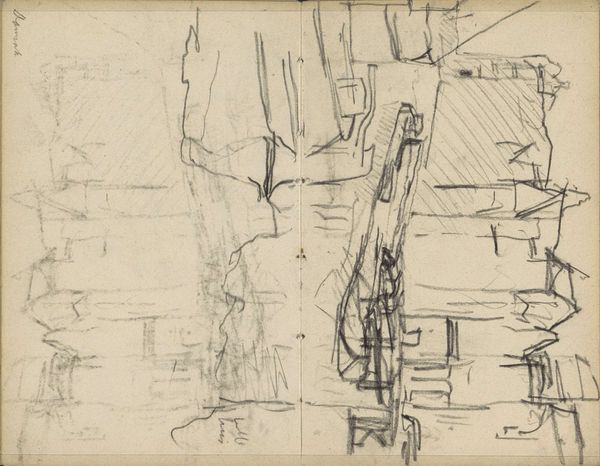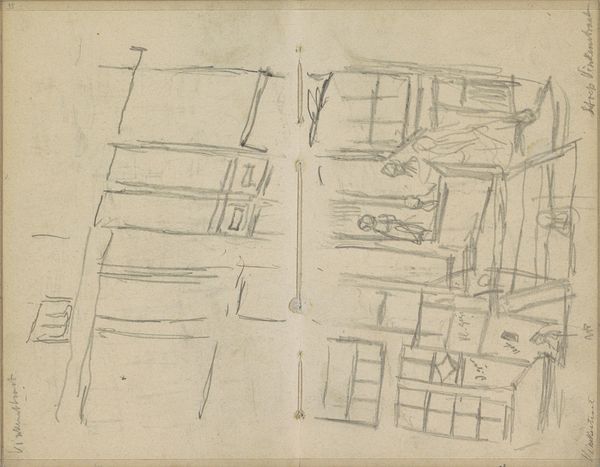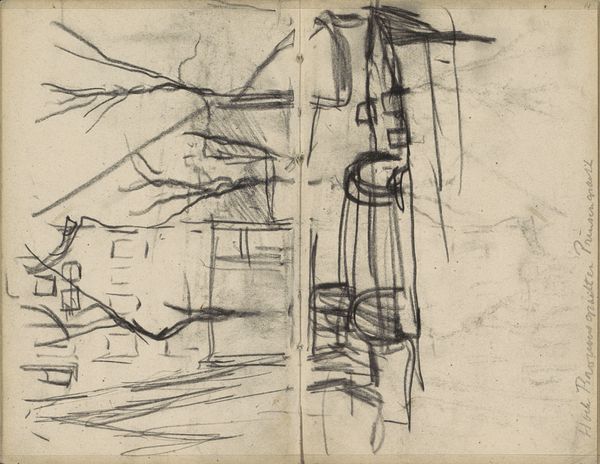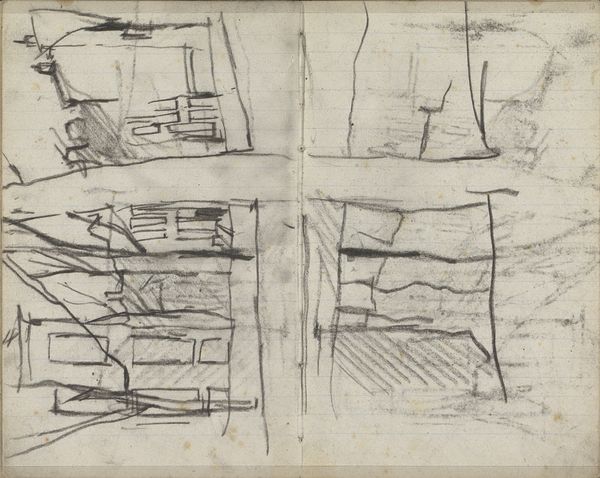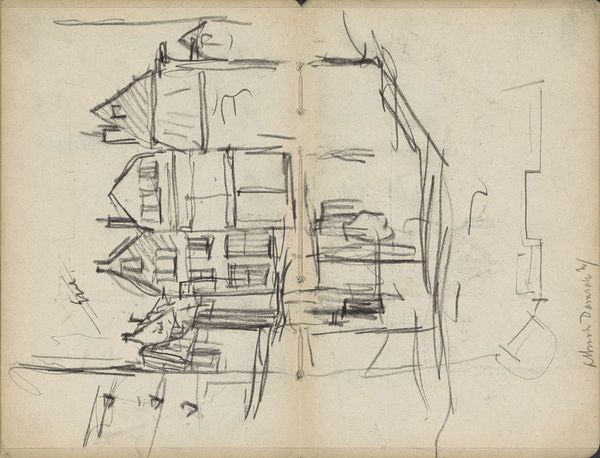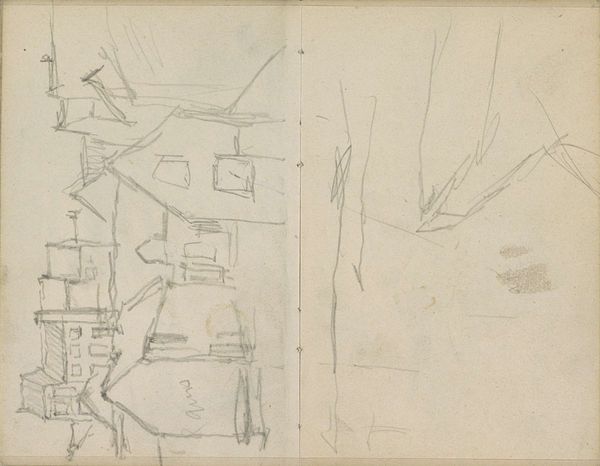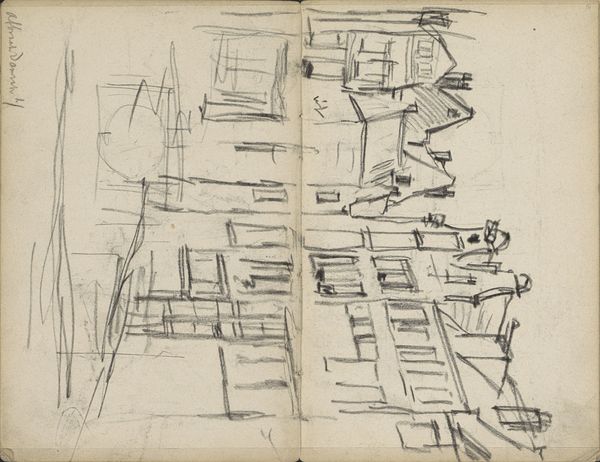
Gezicht op een straat of plein, mogelijk met paardentrams 1893
0:00
0:00
georgehendrikbreitner
Rijksmuseum
Copyright: Rijks Museum: Open Domain
Editor: We’re looking at George Hendrik Breitner's "Gezicht op een straat of plein, mogelijk met paardentrams," created in 1893. It’s a pencil and graphite drawing on paper, currently held at the Rijksmuseum. It feels…unfinished, raw, like a glimpse into the artist’s thought process. What strikes you about it? Curator: The intrinsic value here lies in the skeletal framework of the composition. Observe the stark linearity; the city square is reduced to a series of intersecting planes. The layering of graphite generates a tonal ambiguity. What structural relationships do you discern between the dated sections within the sketchbook spread? Editor: Well, the left sketches, dated April 30th and May 1st, seem denser, more defined. The right side, dated May 2nd, is much sparser, more abstract… almost dissolving. Is this a study in contrasting forms? Curator: Precisely. Breitner is not merely representing the cityscape; he's dissecting it. The juxtaposition between the defined geometric shapes and the ethereal lines creates a visual tension, a semiotic dialogue between solidity and impermanence. How does the materiality of the aged paper itself contribute to this dialogue? Editor: I hadn't thought of that, but the toned paper does give it a sense of time, a fading quality. It's like the city itself is aging. Are these dates annotations or just random details of his observation process? Curator: Consider them temporal markers. Breitner uses them as indices, locating us not just in a place, but in a moment. They provide a structural grounding for the fluidity of his lines. Do you believe this juxtaposition offers an additional insight? Editor: I do. The rigid dates combined with these fleeting sketches suggests a study of time's impact on a place, maybe. I wouldn’t have noticed any of that on my own. Curator: By attending to line, form and composition, a reading becomes evident; a fascinating formal study on the very nature of urban experience through suggestion, not direct representation.
Comments
No comments
Be the first to comment and join the conversation on the ultimate creative platform.
